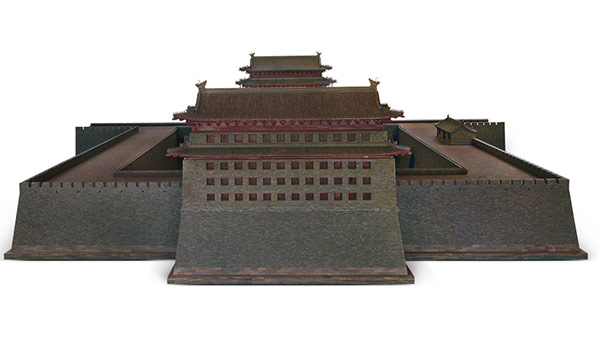

 |
|
The replica of Xizhi Gate and its watchtower. |
Why red sandalwood?
Red sandalwood, known for its slow growth and rarity, is highly valued in China. Chan was heartbroken when she saw some of the furniture made from this lumber destroyed in political movements and has committed to restoring many of the royal pieces.
Early in her endeavor, she invited the Palace Museum's top three experts.
"They did not even look at me when they stepped into my workshop, let alone shake my hand," she recalls. But after they saw what she had done, they gave her a hug, a rare gesture in Chinese culture, and offered her a pass into the Forbidden City warehouses where she could make copies right from the originals.
Shan, curator of the Palace Museum, explains that although his world-renowned museum has the largest collection of furniture from the Ming and Qing dynasties, the 6,200 pieces are stored in 30 warehouses and rarely see the light of day or the appreciative eyes of visitors.
"We don't have that much space for display. Madame Chan's museum makes up for what we lack by showing these wonderful replicas to the public."
Shan has arranged for some of Chan's pieces to be showcased in exhibitions in the Palace Museum, where people could bid on them. "Our love for traditional culture and for fine furniture has grown as our lives become more and more affluent," he adds.
Chan's decision to create the city wall replicas with red sandalwood and Yinchen wood raised the stakes significantly, because these two timbers are rare and expensive. Red sandalwood tends to become hollow as it grows; and Yinchen wood, or a half-carbonized Salix mongolica wood buried underground for thousands of years, was chosen for its matching color with the wall bricks. "We bought lots of them, but could use only a small portion for carving," she says.